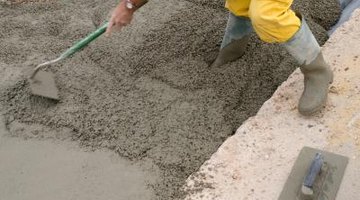Road Construction Methods
The basic construction process for building a road is similar for any road. The differences arise in the finishing of the road or the surface materials used to finish a road.

The process begins with road design, including surveying the route, allowing for drainage and considering the expected volume of traffic and planned development in the area. Next, the important base layers are completed using graders, bulldozers, compactors and levelers, and then the surface layer is applied.
Asphalt Paving

After the road base is prepared and firmly packed, the surface coating is installed. Asphalt — officially known in the engineering parlance as asphalt concrete — is a common substance for many roads, providing a durable and flexible surface. Asphalt requires an aggregate sub-base material layer, and then a base layer to be put into place first. Before the surface is paved with hot asphalt, it must be sprayed with a tack coat of liquid asphalt. A machine then heats the binder and aggregate and distributes it at an even depth. According to the U.S. Department of Transportation, over one-half of the interstate highway systems and 70 percent of all highways are paved with this hot-mix asphalt concrete, also called blacktop.
Cement Concrete Paving

Cement concrete uses cement and water as the binding agent for the aggregate mix. Concrete paving also requires thick base layers of compacted aggregate to form a solid surface for the road. Workers must then construct forms, or molds, along the edges of the planned road to prevent the concrete from spreading before it sets. Cement concrete is broken up with regular joints, connected by wire baskets and dowels. This allows the concrete to expand and contract during seasonal temperature changes without cracking the surface of the road. The surface may be tined, or grooved, with a machine for better traction.
Tar and Chip/Macadam

This style of paving has been used for many years, and it was the first type of paving installed on early roads. Today, tar and chip are often used as a recoating material, not as the original pavement on public roads. However, it is still a popular treatment for driveways and is regularly used for road repair on public roads because it is cost effective and durable. In tar and chip paving, a thick layer of tar or bitumen is spread on the prepared base surface, and then a layer of chips, or small stones, is spread over the tar and compressed into the tar with a roller. The stones may be of varying sizes for different finished appearances. When this method is used for driveways, sometimes colored or decorative stones are used. This can be a durable and cost-effective finishing method.
References
Writer Bio
Rachel Murdock published her first article in "The Asheville Citizen Times" in 1982. Her work has been published in the "American Fork Citizen" and "Cincinnati Enquirer" as well as on corporate websites and in other online publications. She earned a Bachelor of Arts in journalism at Brigham Young University and a Master of Arts in mass communication at Miami University of Ohio.
More Articles



